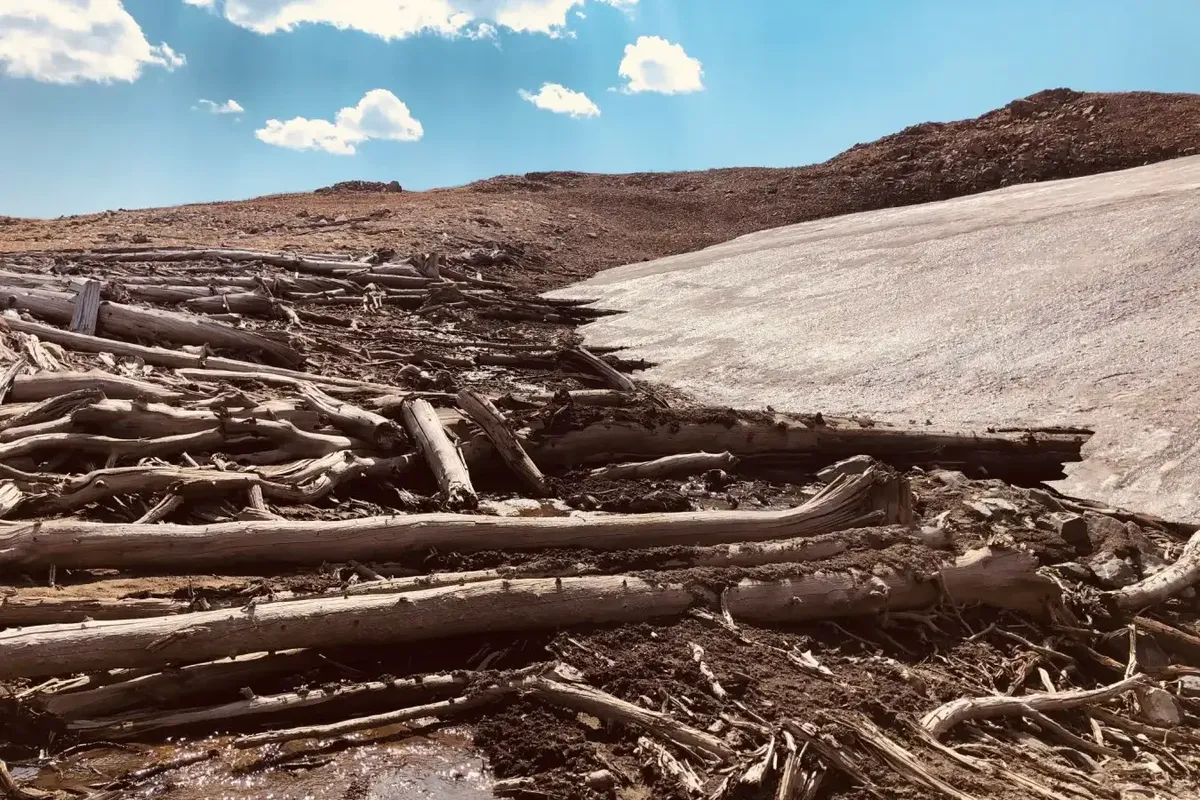Melting ice reveals secret buried in the Rocky Mountains not seen for 6,000 years
In a 5,900-year-old whitebark pine forest.
More than 30 trees are estimated to have been discovered by scientists during an archaeological survey on the Beartooth plateau in Wyoming.
Newly discovered trees are found at an elevation of 3,100 meters above sea level, which is 180 meters higher than the current tree line.
What does this new discovery mean for scientists?
According to Cathy Whitlock at Montana State University, "it gives us a glimpse of past conditions at high elevations, because you won't see Whitebark pine (Pinus albicaulis) growing at this elevation today - that's because the climate was warmer back when these trees existed".
It's believed that the trees thrived around 5950 to 5440 years ago at a time when temperatures were slowly decreasing. To determine the ages of the forest, researchers studied the trees' rings and used carbon dating methods.

What was the cause of this temperature decrease?
To answer this question, we look to Antarctica and Greenland, where ice core data revealed that volcanic eruptions in the northern hemisphere, lasting for centuries, played a significant role in the decline in temperatures. The eruptions produced airborne sediment that blocked sunlight, and as the temperature dropped, the conditions became too harsh for forests to survive.
This is supported by climate models indicating that the temperature drop 5,100 years ago was caused by persistent volcanic eruptions in Iceland, as stated by team member Joe McConnell of the Desert Research Institute in Nevada.
Upon closer inspection, researchers found that the trees were in excellent condition, indicating that they had been well-preserved despite having died. While there's not enough information to conclude that the avalanche helped preserve them, the trees do have features that match the expansion of the current ice patch.
McConnell observed that as temperatures decreased, the ice patch grew in size, and as a result, "the fallen trees were buried in ice and shielded from the elements for the next 5,000 years"
Why can we finally see the forest?
Temperatures are rising, causing the ice to thaw and exposing previously hidden trees. According to Whitlock, as temperatures are expected to keep climbing in the coming years, the current tree line will likely move uphill as the temperatures continue to rise over the next few decades.
This discovery wouldn't have been possible without the effects of human-caused climate change, which is causing longer summers that uncover areas that were previously buried under ice for thousands of years," she added. "Although such findings are scientifically fascinating, they also serve as a poignant reminder of how fragile alpine ecosystems are and how vulnerable they are to the impacts of climate change.
Kevin Anchukaitis at the University of Arizona described this discovery as a "valuable 'time capsule'" that is not only about these forest ecosystems 6000 years ago, but also about the climate conditions that supported them.
Researchers previously discovered other artifacts at Rocky mountain ice patches, including "fragments of wooden shafts used for arrows and darts," stated Whitlock.
One notable discovery was a shaft over 10,000 years old. Whitlock pointed out that this demonstrates how "people have been hunting in high-elevation environments for millennia".
.
The 's free WhatsApp channel.
Subscribe to our free weekly newsletter
The Indo is a sister publication of The Independent, delivering the stories you want to read, in the order you want to read them. Designed specifically for a Generation Z and young Millennial audience, it offers an entertaining, one-of-a-kind perspective on major global news, social media fads, politics, celebrities, sports, science, technology, and individuality. With engaging content and a bold perspective, it's never dull and staunchly champions equality. Follow The Indo at the top of this article.
Posting Komentar